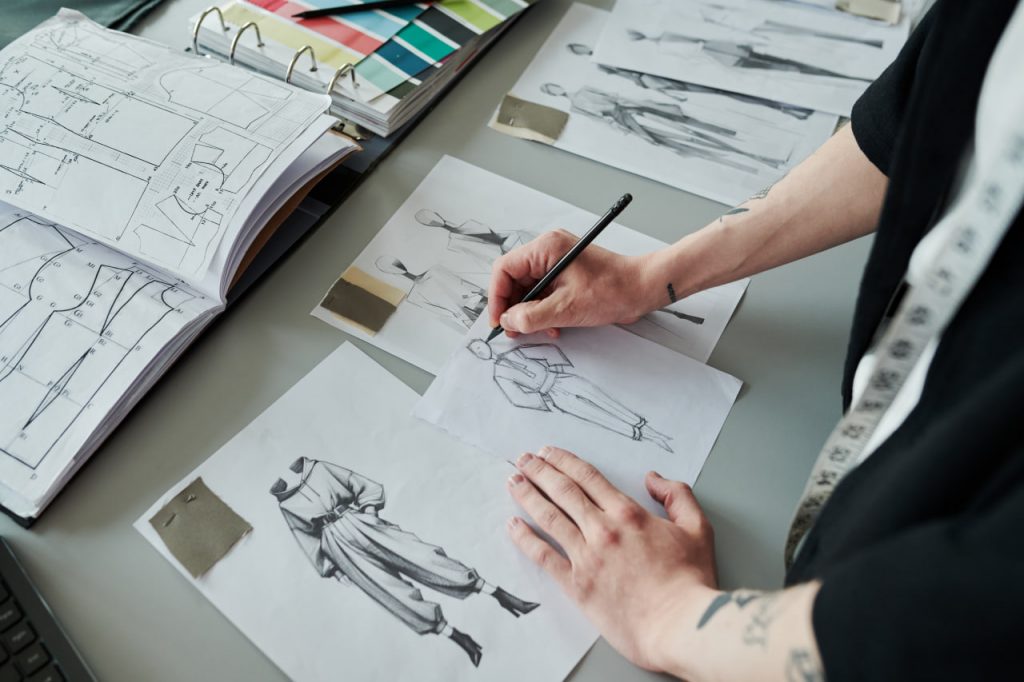Fashion illustration is not only about sketching beautiful garments; it’s also about creating a visual voice that represents your perspective and creativity. One of the most exciting aspects of being an illustrator is developing a unique style that sets you apart from others. But how do you find that style in a world full of influences and techniques? Here’s a step-by-step guide to help you develop your own distinctive fashion illustration style.
1. Explore Different Styles and Influences
Before you can create a unique style, it’s essential to understand the different types of fashion illustration styles that exist. Start by exploring a variety of artists and illustrators, both contemporary and classic. Look at everything—from highly detailed, realistic sketches to more abstract, minimalist designs.
- Tip: Pay attention to the work of famous illustrators like René Gruau, David Downton, or even modern-day illustrators like Megan Hess or David Stevenson. What attracts you to their work? Is it their use of color, their focus on minimalism, or the way they capture movement?
It’s perfectly normal to admire different styles, but you shouldn’t just mimic them. Instead, take inspiration from different sources and experiment with mixing elements you like to create something new.
2. Experiment with Various Mediums
Your illustration style is not just about the subject matter but also about the tools you use. The medium you choose can greatly impact the feeling and character of your drawings.
- Tip: Experiment with different mediums—pencils, watercolors, markers, and digital tools like Photoshop or Procreate. The texture and feel of each medium can influence the outcome of your work. For instance, watercolor gives a soft, dreamy effect, while markers or ink tend to provide bolder, more graphic results.
By trying out different tools, you’ll discover which medium feels most natural to you and complements your artistic expression. Sometimes, combining two or more techniques, such as watercolor and fine line work, can create a unique look that stands out.
3. Focus on the Details that Matter to You
The details in your illustrations can make a significant impact on how your style is perceived. Whether you choose to focus on intricate fabric textures, exaggerated body proportions, or dramatic poses, these details are essential in shaping your distinctive style.
- Tip: Ask yourself: What do I want to emphasize in my fashion illustrations? Is it the flow of the garment? The personality of the model? The accessories? By focusing on what excites you most about fashion design, you can channel that into your work, helping you carve out a personal approach to illustrating fashion.
You don’t have to include every detail in every illustration—sometimes, less is more. Creating a signature touch (like using bold lines for dramatic effects or minimalist designs for a modern vibe) will help define your style.
4. Find Your Own Fashion Iconography
In fashion illustration, you can convey so much with just a few key elements. Finding a specific visual language or iconography for your designs helps to create consistency and recognition in your work. This could involve drawing particular types of garments, patterns, accessories, or even recurring motifs.
- Tip: Start building your visual language by incorporating your favorite fashion elements. Maybe you love illustrating oversized coats, dramatic hats, or flowing dresses. Focus on what you find inspiring and keep incorporating it into your work to make it uniquely yours. Over time, your audience will begin to recognize these elements as part of your style.
5. Embrace Experimentation and Make Mistakes
Developing your own style is a journey that involves trial and error. You might try something new one day and realize it doesn’t work for you, or you may discover a new technique that you love. This process of exploration is how great styles are born.
- Tip: Don’t be afraid to make mistakes or take creative risks. Try sketching in unconventional ways, combine different art forms (like collage or photography), or push your figures into abstract forms. Each attempt brings you one step closer to discovering what feels like “you.”
Remember, your style will evolve as you grow as an artist. Don’t expect it to happen overnight, and allow your style to change with your experiences and skills.
6. Stay True to Yourself
As you navigate the journey of developing your unique fashion illustration style, one of the most important things to remember is to stay authentic. It’s easy to be influenced by what’s trending or to feel the pressure to conform, but the best work comes from genuine passion and originality.
- Tip: Reflect on your personal experiences, tastes, and inspirations. What makes you excited about fashion? What do you want to say with your art? Don’t be afraid to showcase your unique perspective, even if it’s different from the norm.
Your personal experiences—whether it’s your cultural background, your love for a certain era of fashion, or your fascination with specific trends—will shine through in your work and give your illustrations depth and character.

